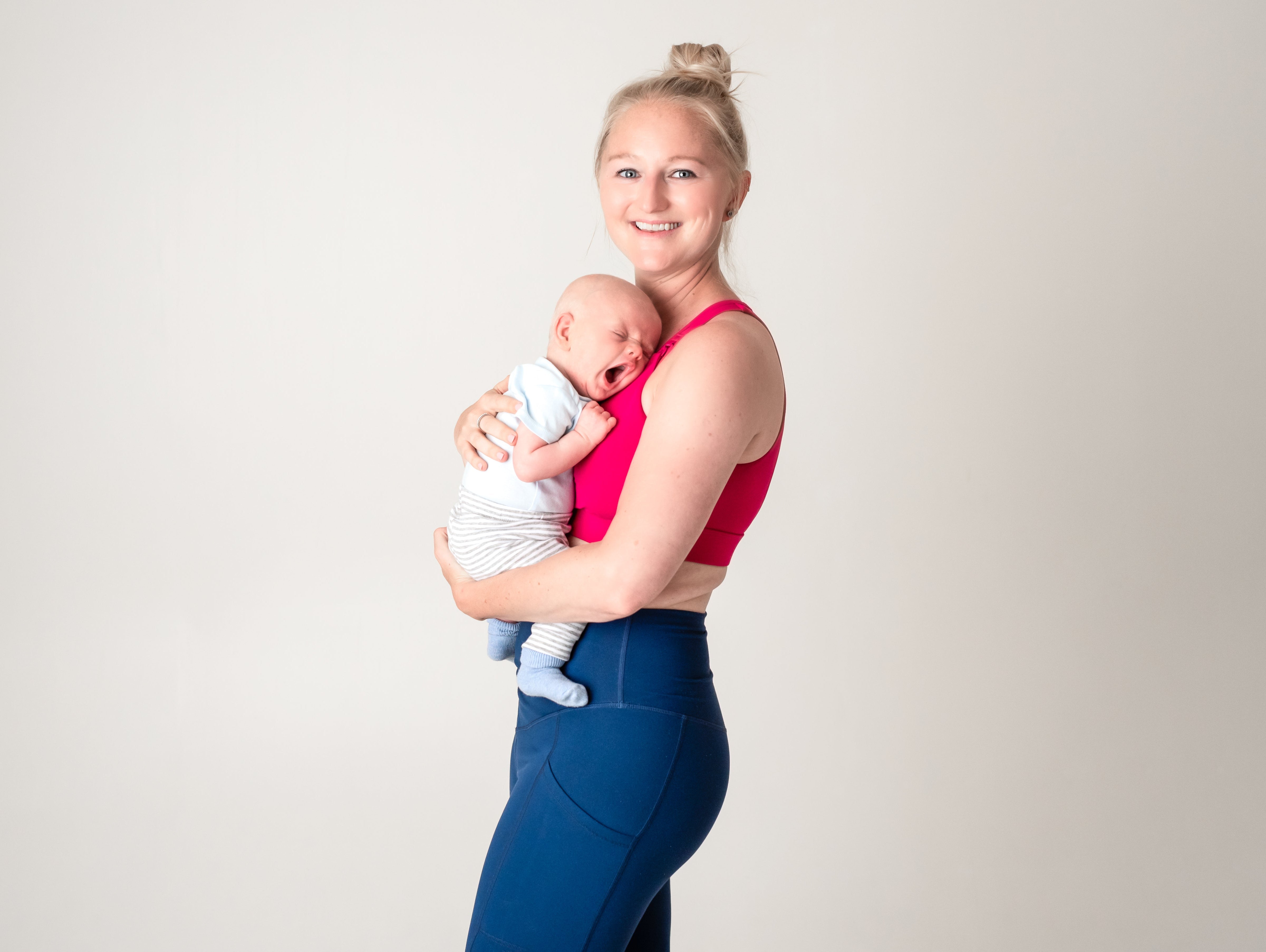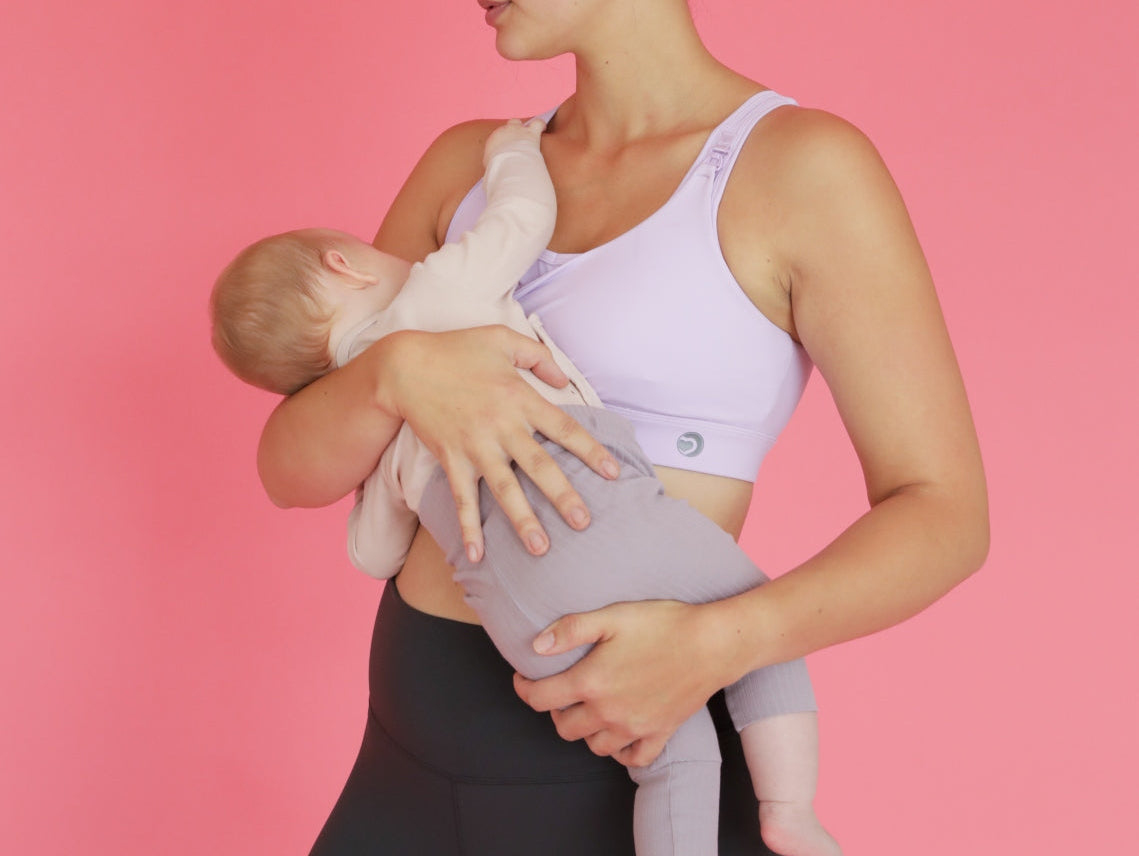A pelvic organ prolapse after giving birth is probably one of the last subjects still seen as a bit taboo. Yet with 1 in 12 women suffering some form of prolapse postnatally, it's a conversation that needs to be opened up.
If you've followed Natal Active for a while you know that we are passionate about the need to start talking more about women’s health. For too long women have suffered in silence and alone. It’s time to open up the conversation about our vulvas and discuss exactly what happens to our bodies after giving birth, without fear or shame.
Pelvic health shouldn’t be a taboo, agrees pelvic health physiotherapist, Clare Bourne. “Discussing the things that don't feel comfortable to talk about is my thing,” she explains.
With pelvic organ prolapse affecting 1 in 12 women and 1 in 3 experiencing some form of incontinence, it’s clear Bourne is herself passionate about supporting women after birth as they transition into motherhood and empowering women so that they can access the high-quality healthcare that they deserve, and need.
But first, women need to understand what symptoms to look out for. While prolapse isn’t life threatening, it can have a major impact on a person’s physical, psychological and social wellbeing.
Here, then, is everything you need to know.
What is prolapse?
According to the NHS, pelvic organ prolapse is when one or more of the organs in the pelvis slip down from their normal position and bulge into the vaginal canal. It can be the womb (uterus), bowel, bladder or top of the vagina. And it can cause pain and discomfort.
What are the symptoms of postpartum pelvic prolapse?
“Women will often feel a sensation of dragging or heaviness with the vagina, feeling the presence of a bulge or they might see changes at the vaginal
entrance when they look,” explains Bourne. “Some women compare the feeling to when a tampon is not in the right place or has dropped down slightly. Women may feel they cannot open their bladder or bowels completely and get a sensation of incomplete emptying.”
What causes prolapse after giving birth?
There are often a variety of factors that contribute to a woman having a prolapse – pregnancy and childbirth is just one of the causes, says Bourne. “This is, in part, due to weakening of the pelvic floor muscles and connective tissues.
“Prolapses are more common in those who have had an assisted delivery or a longer second stage (often known as the pushing stage). Other factors that can contribute are; constipation or straining to open your bowels regularly and hormonal changes as women enter the menopause. It is also important to note that women can experience a prolapse without having been pregnant or given birth.”
Is prolapse after giving birth normal?
“Lots of women do have a prolapse,” reassures Bourne, “so anyone struggling is very much not alone. However, the diagnosis of a prolapse means that there has been a change to the tissues and any symptoms need to be addressed to support them in everyday life – including exercise.”
Why does no one ever talk about prolapse?
“I think it is still seen more as an ‘old lady’ condition and so there is a lot of embarrassment and shame around it if you experience a prolapse when you are younger,” she says.
“Lots of women don’t even know what the symptoms are that they are experiencing, so they don’t seek help. It can also be deeply upsetting and hard to talk about, so not many women feel confident to share their stories. I think there is still a feeling that if you have developed a prolapse you did something wrong in birth, or you didn’t do enough pelvic floor exercises.”
Can you exercise with prolapse?
“Yes! Absolutely and we should be encouraging women to exercise,” says Bourne.
Although what that exercise consists of is hard to say. “The message needs to be: even if we have to take something off the table for a while, it doesn’t mean it has to be forever. So just because high-impact exercise or lifting weights is making you symptomatic now, with the right help and gradual reintroduction we want to get you back to what you love.”
Her best advice? “As there are no blanket rules, try to see a pelvic health physiotherapist either via the NHS or private, and be led by your symptoms. We want to exercise within a symptom free window and then gradually progress the challenge”.
Until you can do that keep working on your pelvic floor exercises. The best cue for lots of women is to think about holding in wind. Try this in sitting or lying first, then progress to doing your exercises in standing. You can also learn to engage your pelvic floor through movement and exercise whilst rehabilitating and also using your breath to help. You may have heard the term ‘exhale on exertion’ - now this may not work or help everyone, but it is one technique. As mentioned before the key is individual support so the programme is tailored to you.
Will I need treatment for prolapse?
If you have any of the symptoms of a prolapse, or if you notice a lump in or around your vagina, you should go see your GP.
Bourne strongly believes that pelvic floor physiotherapy should be a routine postnatal option. “The NICE guidelines in the UK state that first line treatment should be individualised pelvic floor therapy – i.e. with a physio – and I believe all women with a prolapse should receive this. We are not there yet, but all women would benefit from it,” she says.
“It is not just about pelvic floor exercises though, we need to think about our bowel health and also whether devices like a pessary may support whether that be short term or long term.”




